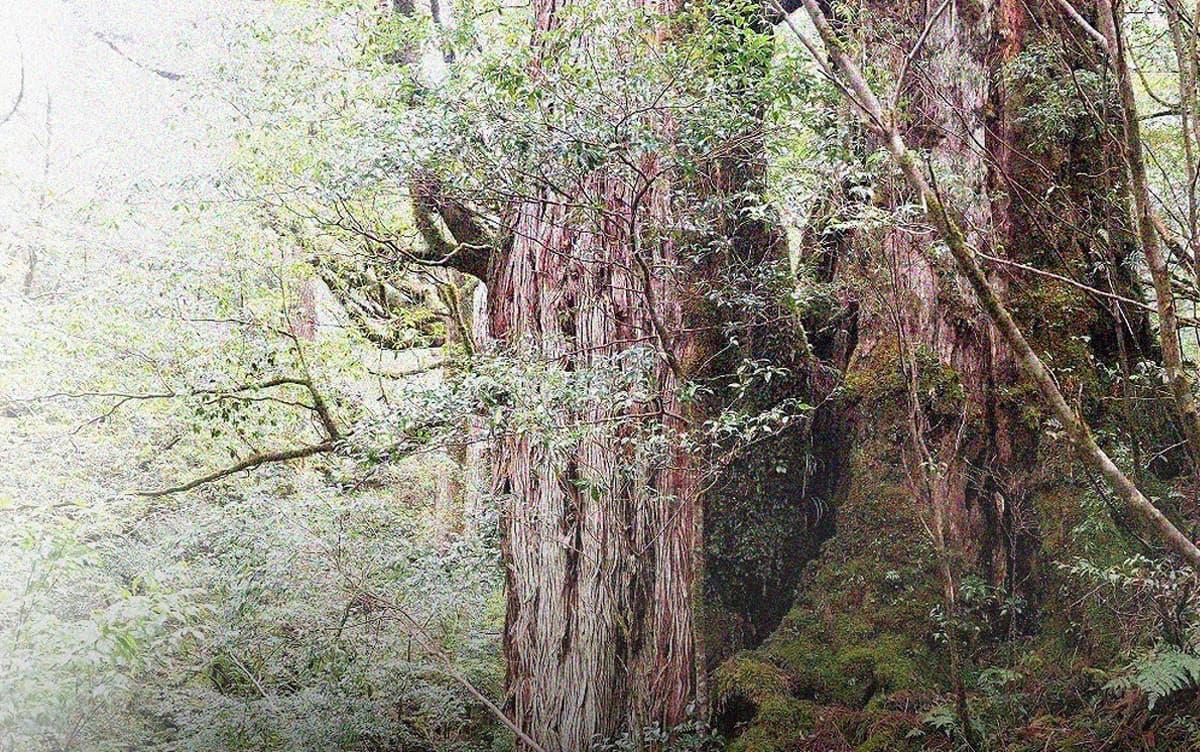Research News
Canopy Soil of Old-Growth Forest Fosters Rich and Unique Invertebrate Diversity That is Vulnerable to Human Disturbance

Huge Japanese cedar trees (Yaku-sugi), whose ages are over a thousand years old, grow on Yakushima Island, Japan. Researchers from University of Tsukuba discovered a diverse array of invertebrate animals living in the canopy soil. This unique ecosystem, formed by the accumulation and decomposition of leaves at the junctions of branches and trunks in the old-growth cedar forests, hosts a taxonomic composition of animals that significantly differs from that of the ground soils. This finding underscores the existence of a unique and valuable biodiversity within the canopy of these old-growth forests.
Tsukuba, Japan—Yakushima Island, a world heritage site in Japan, is renowned for its rich biodiversity. The huge Japanese cedar (Yaku-sugi) forests, which are over a thousand years old, are a symbolic ecosystem of the island. Although the canopy of these colossal trees, including the Japanese cedar (Yaku-sugi), is considered to harbor a wealth of undiscovered biodiversity, conducting actual surveys presents significant challenges.
A research group embarked on an expedition up a Yaku-sugi tree and collected samples of "canopy soil," a long-term accumulation of decomposed leaves deposited at the junctions of branches and trunks. Using a genetic analysis technique known as DNA metabarcoding, the researchers discovered a broad range of invertebrates within this soil. The diversity was high, which is comparable with that of surface soil animals. However, the composition of families was markedly different, suggesting that the biota of the canopy soils were different from that of the surface. Further investigation of younger cedar trees, approximately 300 years old, revealed a lesser amount of canopy soil deposition and a lower number of invertebrate families and orders detected. The results reveal that the canopy soil of old trees contains rich and unique invertebrate diversity that has not recovered from logging, even after 300 years.
During the Edo period (1603-1868), Yaku-sugi trees were extensively logged, leaving primarily trees deemed of little timber value on Yakushima today. Nevertheless, the canopy soils that formed on the remaining Yaku-sugi trees have provided a valuable habitat for small organisms.
Globally, the number of old-growth forests with large trees is dwindling. This research represents a significant step toward re-evaluating the biodiversity value of such forests from a fresh perspective.
###
This research was funded by JSPS (20K06090) and the Certificate Programme on Nature Conservation, University of Tsukuba.
Original Paper
- Title of original paper:
- Legacy over a thousand years: Canopy soil of old-growth forest fosters rich and unique invertebrate diversity that is slow to recover from human disturbance
- Journal:
- Biological Conservation
- DOI:
- 10.1016/j.biocon.2024.110520
Correspondence
Associate Professor SAEKI Ikuyo
Institute of Life and Environmental Sciences, University of Tsukuba
Professor ISHII Hiroaki
Graduate School of Agricultural Science, Kobe University
Related Link
Institute of Life and Environmental Sciences



